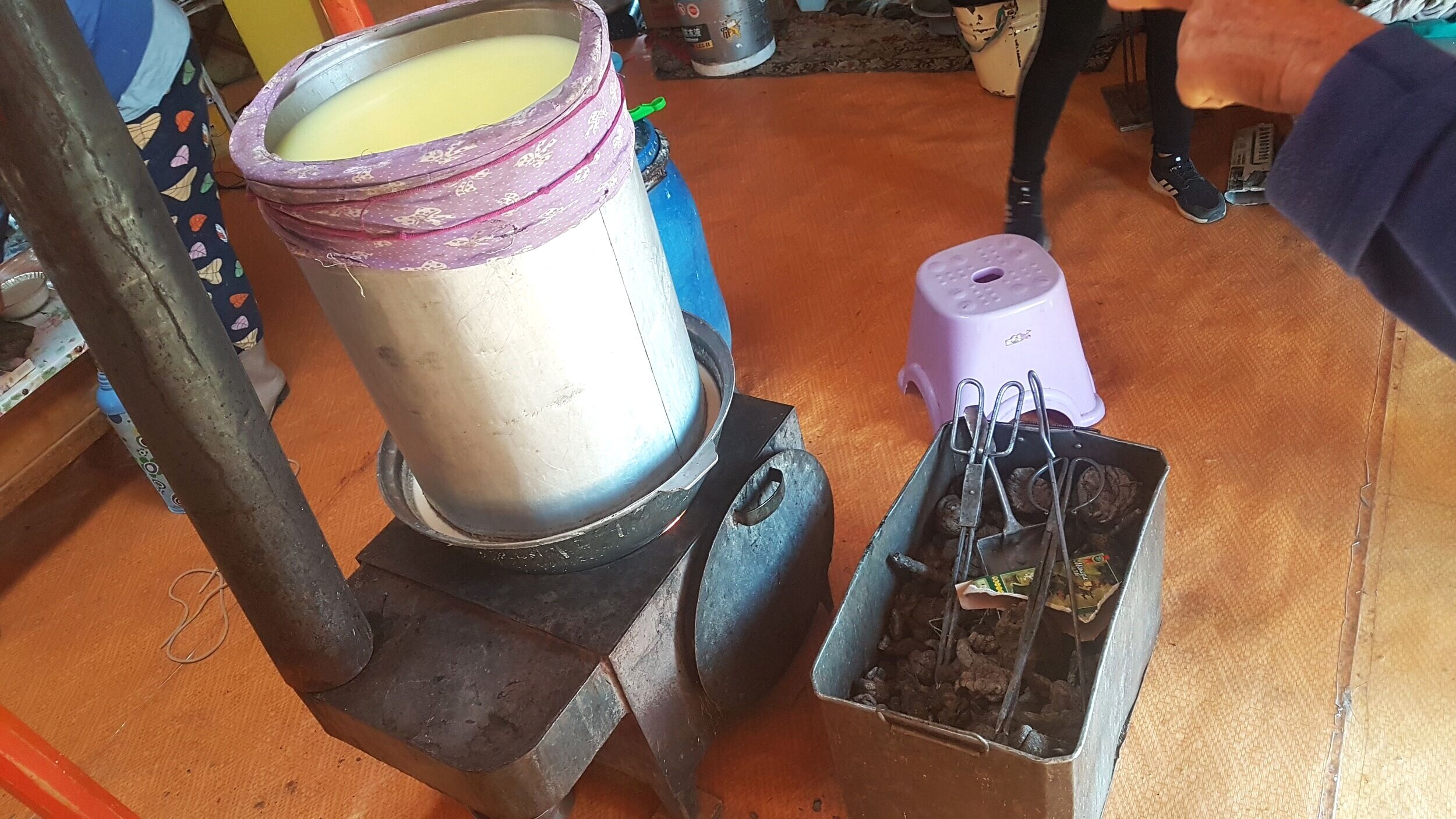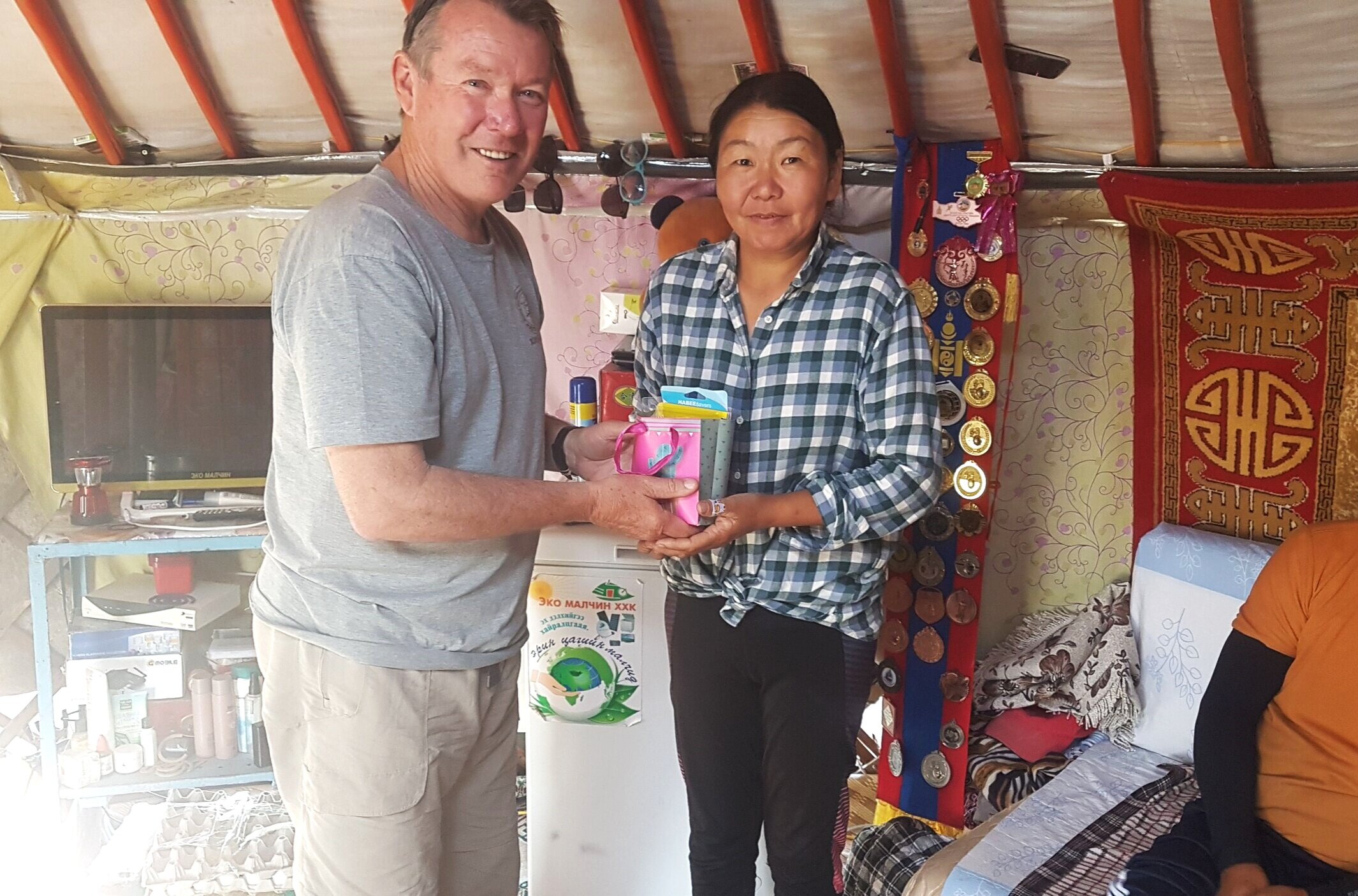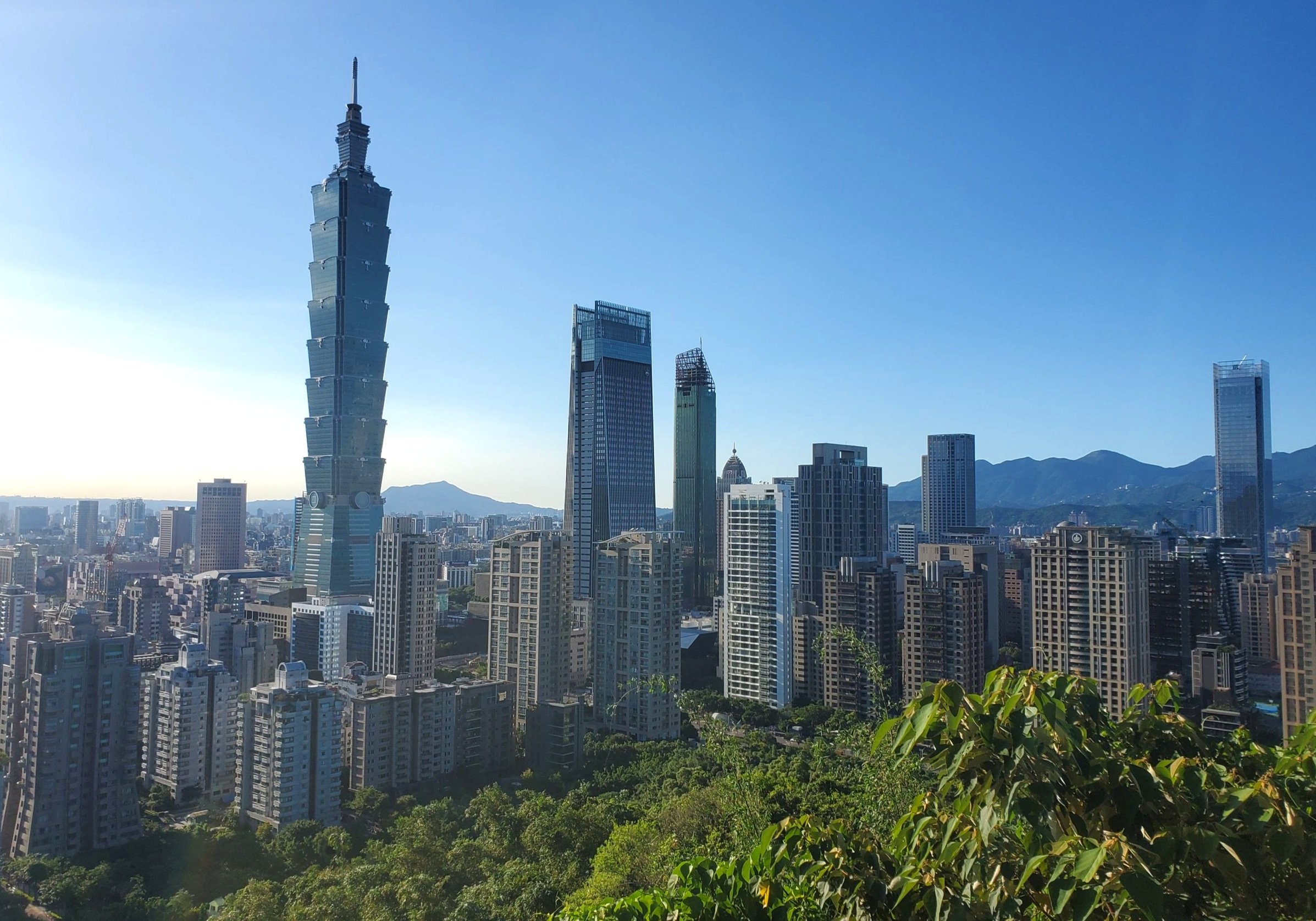Our Top Tips for Travel in Mongolia
/Introduction
In August and September 2019, we spent a month in Mongolia. Before going we did some research as to what to expect in terms of weather, culture, food, in-country travel, etc. This turned out to be very useful as we were reasonably well prepared for our Mongolian adventure. But we also learned a lot while there that helped ensure a culturally sensitive and enjoyable trip.
most Mongolians are buddhist
While we don’t pretend to be experts on Mongolia, we do believe that some of the tips we’ve come across are worth sharing with anyone planning their own trip to the country. Here’s what we recommend.
Tip 1. Hire a Driver and Guide
We are not keen on group tours, preferring to travel independently to where and when we choose. We’d read that public transport was very limited in Mongolia so, we considered self-drive. There is at least one company that specialises in this approach to travel in Mongolia. But when we looked in more depth at what would be involved in navigating around this vast country, with little paved or signposted roads, we decided against it, in favour of hiring a vehicle with driver and guide. We ended up going through a small local tour company Man of Millennium (MoM), who provided us with a van, driver, and guide (see our posts on Classic Mongolia Circuit Part 1 and Part 2 for more details).
There were three of us (Ken, Cally and Ken’s brother Pete), so with driver Baagii and guide Degi we were five people plus luggage. It was snug in the van but ok.
our van with driver baagii
For us, this was definitely the right choice. Probably around 75% of the 4,000km 18 day trip we did was on unpaved tracks. We marvelled at Baagii’s navigation, knowing which vague trail to head up, based on his knowledge of the topography. If we’d tried to do this ourselves, we would have spent half our time just trying to work out where we were, and the other half lost.
our driver always knew which track to take
It was informative to see how even major tourist drawcards were located “in the middle of nowhere’. Case in point Amarbayasgalant Monastary, one of Mongolia’s most significant monasteries and tourist attractions, which ‘appeared’ in front of us after hours driving on dirt tracks across the vast steppe grasslands.
the road to the monastery was just a track across the grasslands
We also recommend taking a guide. We met a number of foreign tourists who had hired a vehicle and driver, but to save money, no guide. The drivers invariably had little or no English (or other European languages) and the visiting tourists often had little idea as to where they were going or what they were seeing.
soviet built 4 wheeled drive vans called furgons are popular to hire with foreign tourists along with a driver
Our guide Degi was excellent and added majorly to our experience. And it didn’t add much expense to our trip.
degi
Tip 2. Get a Local SIM Card
We purchased a local SIM through Mongolian telco Unitel. That had a “tour sim” option which lasts 30 days, the length of a standard Mongolian tourist visa. It cost 40,000 tughrik ($Aus 22/ $US15). There are other local telcos with similar offers.
even in isolated ger camps we could sometimes get a signal
All the major towns had internet reception and many of the smaller towns too. So, while we couldn’t always get a signal at our ger camps, we’d invariably pick up signals through the day driving across the country.
Tip 3. Try Some Airag
Airag is fermented mares’ milk. It is mildly alcoholic and not unpleasant to taste.
it’s always airag 0’clock when visitors call into a ger
In a country of 3 million people and over 70 million livestock, animal products rule when it comes to food and drink. And the nomad tradition of keeping horses makes them a natural source of milk.
milking the mares
If you visit nomad families, such as those who run the budget family-run ger camps during the summer, you will be invited into their ger (tent/yurt) and offered milk tea and/or airag along with curd snacks.
a bowl of curd snacks to accompany the milk tea and airag
During our stay we were also offered (and accepted) fermented camels’ milk and goats’ milk and vodka made from goats’ milk.
goats’ milk being distilled into vodka
If you don’t give it a try, you’ll be missing a genuine Mongolian experience of hospitality.
Tip 4. Try the Food Too
We admit to being nervous about trying Mongolian cuisine prior to leaving home. This was based on our readings and also some disturbing YouTube clips of nomad families tucking into a big bowl of boiled sheep intestines. It was probably the aspect of the trip we were least enthusiastic about.
Our tour company Man of Millennium asked us, when we booked, if we wanted the vegetarian option. We could’ve chickened out and said yes, but decided that this would be a cop out, that we needed to give the local food a try.
lunch at a roadside ger restaurant
As things turned out, we weren’t presented with the feared bowl of boiled offal, though we did observe some disturbing food prep sights in some of the family gers.
Our guide prepared all our food and consulted us on what we wanted to eat. We ended up trying a lot of local dishes, which were very meaty, especially mutton-based. The buuz (dumplings) we quite good. They came in fried and boiled-in-milk versions. We also had fried horse dumplings, which were lean and tasty. No one loves their horses more than the Mongolians, but once their working lives are over, they are utilized like everything else. There’s no waste.
cally getting a dumpling making lesson from degi
We also had good pasta, yoghurt and cream.
Tip 5. Learn a Bit of the Local Language
It goes without saying that this is good practice for all travel. In Mongolia the local language is very different to European languages. Mongolian is actually related to Turkish, Korean and Japanese.
Hello Сайн уу Sain uu
Goodbye Баяртай Bayartai
Thank You Баярлалаа Bayarlalaa
Good Morning Өглөөний мэнд Öglöönii mend
Good Evening Оройн мэнд Oroin mend
Please Гуйя Guiya
One, two, three, four, five Нэг хоёр гурав дөрөв тав Neg khoyor gurav döröv tav
mini markets - some letters are the same in Cyrillic as English and some words are also the same
Mongolian uses the Cyrillic alphabet so it’s worthwhile learning it before you arrive.
Even a poorly pronounced attempt at “good morning”, which sounded to us something like “oosh luni mint” (Öglöönii mend), will be appreciated by your Mongolian ger hosts.
Tip 6. Pack for All Weathers
We went in late summer – early August to early September. In the capital Ulaan Bataar it was mild and comfortable during the day, but it is not known as the world’s coldest capital for nothing. At 1350m above sea level and a high northern latitude (nearly 49 degrees north) and a long distance from the ocean it can get pretty cold – down to minus 40 Celsius in January.
pack warm clothes. Though you could argue that this was overdoing it a bit
In the north, near the Russian border, we had warm August days, but cold nights, with fires keeping us cosy in the gers. We were glad that we’d brought thermal underwear and winter fleeces with us.
old mate setting up a fire for our ger in anticipation of a cold night ahead
Down in the south, in the Gobi, days were hot (shorts and t-shirt) but nights varied from mild to cold.
late summer days in the gobi were hot
The lesson is ‘be prepared’ for all weathers, even if you are going in summer.
Tip 7. Bring Gifts for Nomad Families
As part of our research for the trip we had read that it was customary, when staying with nomad families, to give the family a small gift to thank them for their hospitality. Knowing that we would be staying much of the time in gers run by nomad families, we brought with us a selection of items to provide small gift packs.
Advice had been to include such items as soap, candles, sewing kits, hair ties and small toys for children. We brought these along with a stock of koala and kangaroo keyrings with “Australia” written on them. We tried to avoid things made of plastic that would end up as non-biodegradable refuse, such as textas or toothbrushes. We also brought some small colourful gift bags which made the handing over of the giftpack a little more orderly and demonstrated that we’d given the issue some fore-thought.
some of the gift items we took with us
Overall, this approach worked well and appeared to be appreciated by the families. We also noted that most foreign tourists didn’t seem to be bothering with the gift giving, which is a bit of a shame.
Tip 8. Bring Sanitary Items
Travelling in summer, particularly in the Gobi (central and southern Mongolia), water can be scarce. We found some smaller family-run ger camps had little water, except for the family’s use. We brought with us bottled water for drinking and there was plenty available in local shops and supermarkets in the towns when we needed to restock.
a well stocked supermarket in a large provincial town
But what we didn’t have much of was water for washing. The larger tourist ger camps have showers but usually the small family-run ones don’t.
degi doing the washing up in a bucket
We found that bringing hand sanitiser and wet wipes was important. We also brought with us from Australia biodegradable “wilderness wash soap”, so if we did find a steam to clean up in, we wouldn’t be polluting the water.
toilet paper wasn’t provided
Toilet paper was not provided in the family-run ger camps or many public toilets. Easy enough to purchase in Mongolian towns, stock up before you head out to the country-side.
Tip 9. A Small Security Tip
Mongolia is a very safe country. Locals will give you warnings about the possibility of pick-pockets at major tourist sites, but that’s about it.
beware pickpockets, especially those wearing suits and ties
However, we come from a less trustworthy world and feel more secure when our possessions are safely under lock and key when we’re away from them. We found that most ger accommodation had lockable doors, but they didn’t always have locks. We had our own small padlocks so used them when not provided.
gers are lockable
Our concerns were more regarding other travellers staying at the camps than the people running them. Probably unfounded fears, but we still locked our gers when not there.
Tip 10. Learn Some Ger Etiquette
There are a whole bunch of rules relating to etiquette when entering, leaving and being inside a ger that we, understandably, had no knowledge of. Allowances are made for foreigners’ ignorance of these, but it is culturally sensitive to learn a few basics, so as not to offend your hosts when staying in a ger.
it’s ok to hang your washing on the outside of the ger
Here are a few we learned during our stay:
* Don’t stand on the threshold of the ger as this is symbolic of standing on the patriarch’s throat.
* If you stumble at the entrance to the ger, either going in or out, you should pick up a piece of firewood and put in on the fire (even if the fire isn’t on). Otherwise this will bring misfortune to the household.
* Do not walk between the two centre poles, walk around them, and don’t lean on them.
walk around the centre poles not between them
* Don’t whistle in a ger, it brings bad weather.
* Lie with your feet facing the door.
* Don’t cross your legs.
* Don’t touch people’s heads or hats.
* Traditional gers, occupied by a family, have 4 different sections – (1) Wife’s/kitchen – to the right when entering (2) Husband’s (3) Visitors (4) Dairy production
* When offered a bowl with curd snacks or biscuits touch the bowl then take something, and eat it.
* When given a drink, such as milk tea, sip some before putting it down. Also its rude to leave some, but ok to refuse a refill.
ger dining
Tip 11. A General Travel Tip Regarding Luggage
A practice we follow whenever we are travelling by air is to make sure that we have essential medication and travel documents with our hand luggage rather than packed in our checked-in bag(s). If our bags go missing or temporarily AWOL this can be a serious problem, especially if our destination is a country that has a dubious health care system. It’s also wise to have with you all credit cards, mobile phone (and charger) and even a change of clothes for long trips.
We were reminded of the value of this tip when Ken’s brother Pete, who was joining us on the trip, met us in transit in Beijing, where he’d already been informed that his budget Chinese airline, had sent his bag to the wrong destination.
pete being reunited with his bag after a week without it
It took a week, and many phone calls and emails, to track it down and have it forwarded to Mongolia, where it was supposed to go in the first place. He was eventually reunited with it in rural Mongolia as Man of Millennium Tours kindly arranged for a rendezvous between our vehicle and another heading out on tour.
Tip 12. Some Tips for the Trans-Mongolian Railway
And finally, if you happen to be doing the 30 hour train trip on the Trans-Mongolian Railway from Ulaan Bataar to Beijing, as we did, here are a couple of useful tips.
* Book your tickets well in advance.
We used a local Mongolian agency Mongoliantraintickets.com . They purchased the tickets for us and delivered them to us at our accommodation a couple of days before the trip. We paid upon delivery.
In the lead up to the trip they emailed us a receipt indicating that we had booked for the date we wanted, and this was provided as part of our visa application for China, where evidence of means of arrival and departure are required.
* Bring food and water. There are boiling water urns in each carriage so you can make your own tea, coffee, pot noodles etc.
Limited food and drink are available on the train, but you have a much better selection and its cheaper to stock up in Ulaan Bataar before boarding.
the urn in our carriage
* Bring toilet paper and sanitary wipes.
No toilet paper or soap was provided on our train in the toilets in our carriage.
* Get some Chinese Currency in Ulaan Bataar.
We found it handy to have with us some Chinese yuan which we got from a bank in UB at a reasonable rate. The border crossing took around 5 hours, mostly spent at the Chinese border town. We could purchase food and drinks there with our yuan.
It also meant that we could jump in a taxi on arrival in Beijing and go straight to our hotel and pay in cash.
beer o’clock on the trans-mongolian
Conclusion
The list of tips in this post is by no means comprehensive. Four weeks is certainly not enough time to learn in depth about the culture and traditions of the Mongolian people. But for most tourists, who like us just come for a short time, even taking on board a few of the tips listed here will add to the quality of their experience.
We hope you find them useful. We know we did.
Ken and Cally
some small visitors

























































































